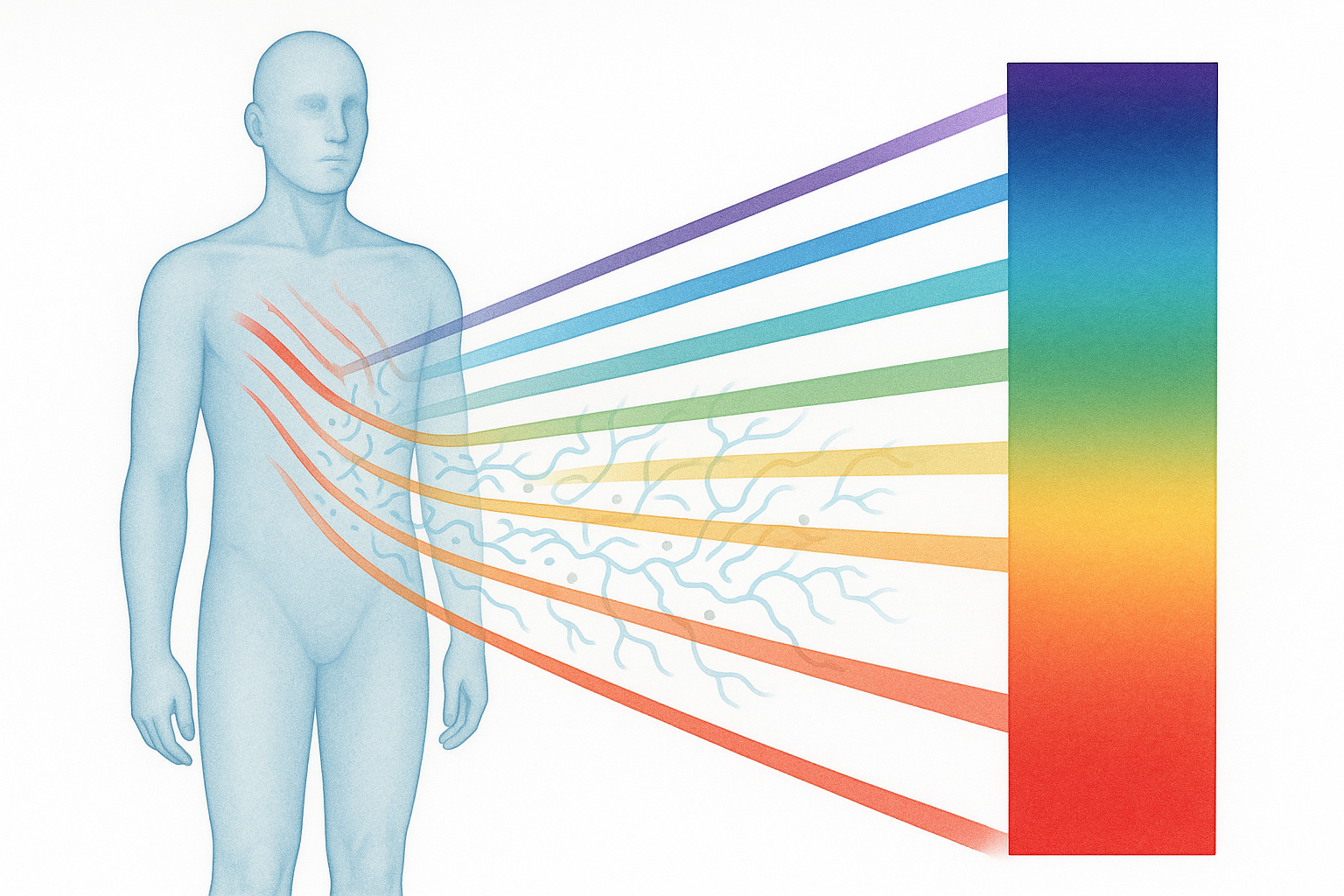When scientists use light to peer inside the body—whether for imaging tumors, tracking cells, or guiding therapies—they face a major obstacle: tissues don’t let all light pass through equally. Molecules like hemoglobin, water, and lipids absorb and scatter light, making it difficult to see deep beneath the skin. But there is a “sweet spot” in the spectrum where tissues become relatively transparent. This is known as the biological optical window.
The biological optical window generally spans from 650 to 950 nanometers, in the red to near-infrared (NIR) region of light. Within this range, absorption by hemoglobin (which dominates in the visible spectrum) and water (which dominates in the infrared) is minimized. The result is a clearer path for photons to travel, enabling light-based imaging systems to capture signals from much deeper inside living tissue.
This discovery has revolutionized biomedical research. Techniques such as bioluminescent imaging, fluorescence imaging, and even optogenetics benefit from shifting their light sources and reporters into this optical window. For example, red-shifted luciferins and fluorescent proteins allow researchers to track biological processes in small animals with much greater sensitivity and depth than traditional green or yellow reporters.
In medicine, exploiting the biological optical window is also central to photodynamic therapy, laser surgery, and the development of wearable optical sensors. By tuning light to this window, clinicians can visualize tissues and deliver treatments more effectively.
A striking example of this principle is the development of infraluciferin, a red-shifted luciferin substrate used in bioluminescent imaging. Unlike the classic D-luciferin, which emits yellow-green light outside the optimal transparency window, infraluciferin produces light in the far-red to near-infrared range, right inside the biological optical window. This shift dramatically reduces signal loss in tissues, enabling researchers to visualize biological processes deeper inside the body with greater clarity. In addition, when paired with engineered luciferases, infraluciferin supports multi-color imaging and more stable signals, making it a versatile tool for modern in-vivo imaging.
In short, the biological optical window is nature’s built-in viewing channel, and innovations like infraluciferin are helping scientists make the most of it—shedding light, quite literally, on the hidden workings of life.
